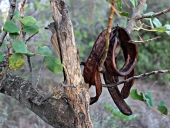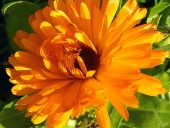
 6
6









I am creating the ultimate educational platform to make permaculture accessible to everyone.
To help, please answer a couple of questions (anonymously) at: https://nisandeh.com/permies-demographics-questionnaire/
 2
2




Creating edible biodiversity and embracing everlasting abundance.
 1
1




Hugo Morvan wrote:Would it help to shove leaves and debris under the newest outer pioniers and let it be?
Hugo Morvan wrote:Have you tried summer purslane? It can form thick layers as well. Hardly needs water and is super nutritious!
Hugo Morvan wrote:It sure would be nice if you could grow a nitrogen fixing shrub. Must be something on the island!
I am creating the ultimate educational platform to make permaculture accessible to everyone.
To help, please answer a couple of questions (anonymously) at: https://nisandeh.com/permies-demographics-questionnaire/
 3
3




Creating edible biodiversity and embracing everlasting abundance.
 1
1




Hugo Morvan wrote:Thank you Neta. This looks like an interesting candidate for your project. A local clover called bituminaria bituminosa.
I am creating the ultimate educational platform to make permaculture accessible to everyone.
To help, please answer a couple of questions (anonymously) at: https://nisandeh.com/permies-demographics-questionnaire/
 3
3








Invasive plants are Earth's way of insisting we notice her medicines. Stephen Herrod Buhner
Everyone learns what works by learning what doesn't work. Stephen Herrod Buhner

 2
2




How Permies works: https://permies.com/wiki/34193/permies-works-links-threads
My projects on Skye: The tree field, Growing and landracing, perennial polycultures, "Don't dream it - be it! "




Nancy Reading wrote:Another advantage of living mulches, particularly succulents, in a mediterranean climate is that they would be less of a fire hazard than dead plant matter.
I am creating the ultimate educational platform to make permaculture accessible to everyone.
To help, please answer a couple of questions (anonymously) at: https://nisandeh.com/permies-demographics-questionnaire/
 1
1




Hugo Morvan wrote:This looks like an interesting candidate for your project. A local clover called bituminaria bituminosa.

I am creating the ultimate educational platform to make permaculture accessible to everyone.
To help, please answer a couple of questions (anonymously) at: https://nisandeh.com/permies-demographics-questionnaire/
 2
2





I am creating the ultimate educational platform to make permaculture accessible to everyone.
To help, please answer a couple of questions (anonymously) at: https://nisandeh.com/permies-demographics-questionnaire/
 2
2




Creating edible biodiversity and embracing everlasting abundance.




Hugo Morvan wrote:Did you check out if periwinkle grows that far south? Here it growth happily on south facing sun exposed slopes.
I am creating the ultimate educational platform to make permaculture accessible to everyone.
To help, please answer a couple of questions (anonymously) at: https://nisandeh.com/permies-demographics-questionnaire/




. yes succulents for summer only and then rodents eat them. but in the lower dessert in california also freezes 20 F very often november till may .Nancy Reading wrote:Another advantage of living mulches, particularly succulents, in a mediterranean climate is that they would be less of a fire hazard than dead plant matter. They must still build up into soik over time as well I guess though.

|
Did you miss me? Did you miss this tiny ad?
The new kickstarter is now live!
https://www.kickstarter.com/projects/paulwheaton/garden-cards
|








